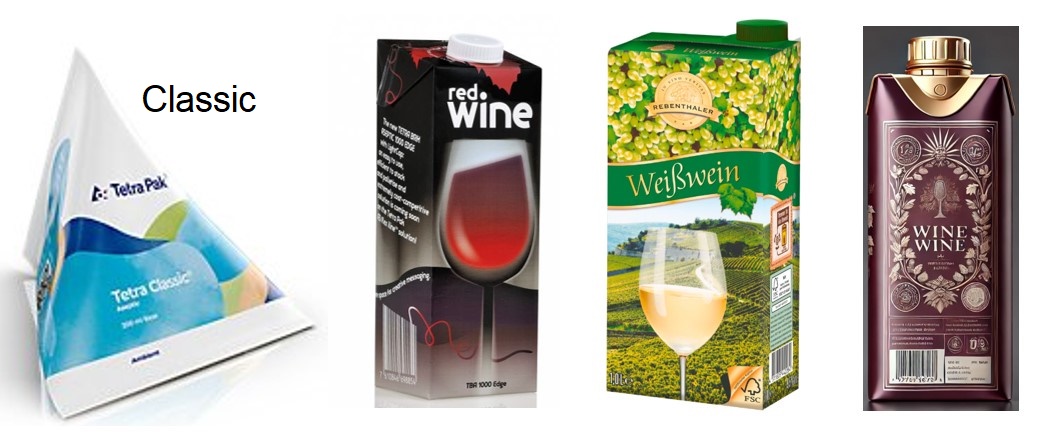Cardboard packaging invented by the Swedish company Åkerlund & Rausing in 1943 and used for beverages of all kinds. It was developed by chemist Erik Wallenberg (1915-1999) based on an idea by entrepreneur Ruben Rausing (1895-1983). Rausing and Wallenberg then founded the company "Tetra Pak AB" in 1951. The coating of cardboard (paper) with plastics was completely new. The name derives from the original tetrahedron shape (three-sided pyramid), which the packaging used to have for production reasons. A carton tube that has already been filled is twisted by 90° and cut off. Tetra Pak was first used for milk in 1951.

Tetra Brik
Tetra Pak is used as a synonym for all similar packages, although today the most common type, "Tetra Brik", is cuboid or brick-shaped. Since the 1980s, Tetra Pak has also been used for wine, although initially it was mostly used for simpler qualities. Since the EU wine market regulation came into force in 2009, quality wines can also be bottled in Tetra Pak. Apart from its aesthetic appeal, Tetra Pak has the advantage that (compared to glass) the liquid is excellently protected against the effects of UV light and the cuboid containers are easy to stack.
Voices of our members

The wein.plus encyclopaedia is a comprehensive, well-researched reference work. Available anytime and anywhere, it has become an indispensable part of teaching, used by students and myself alike. Highly recommended!
Dominik Trick
Technischer Lehrer, staatl. geprüfter Sommelier, Hotelfachschule Heidelberg